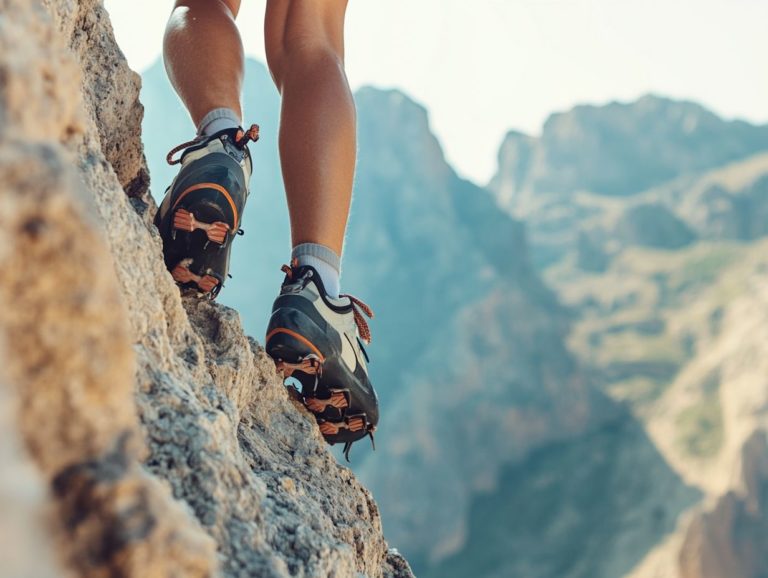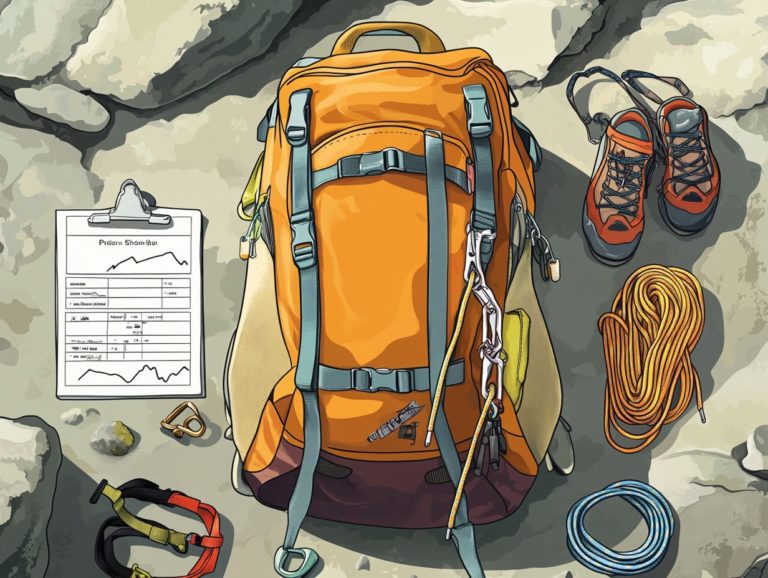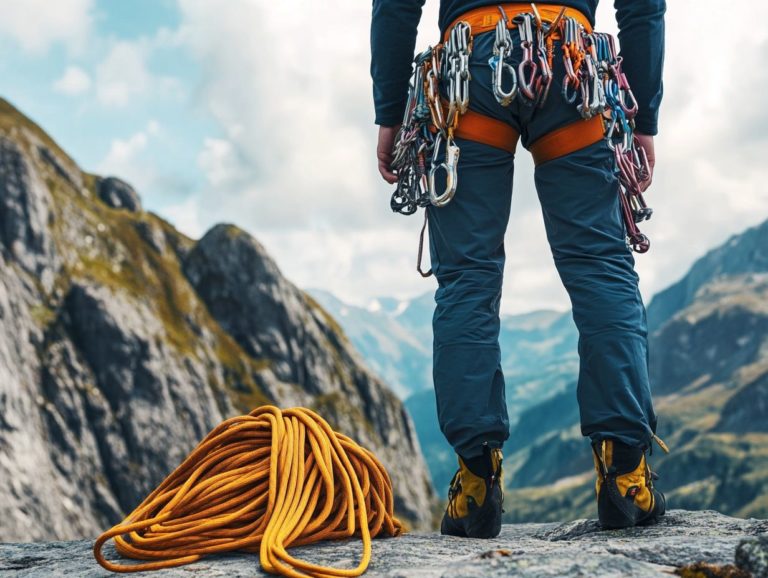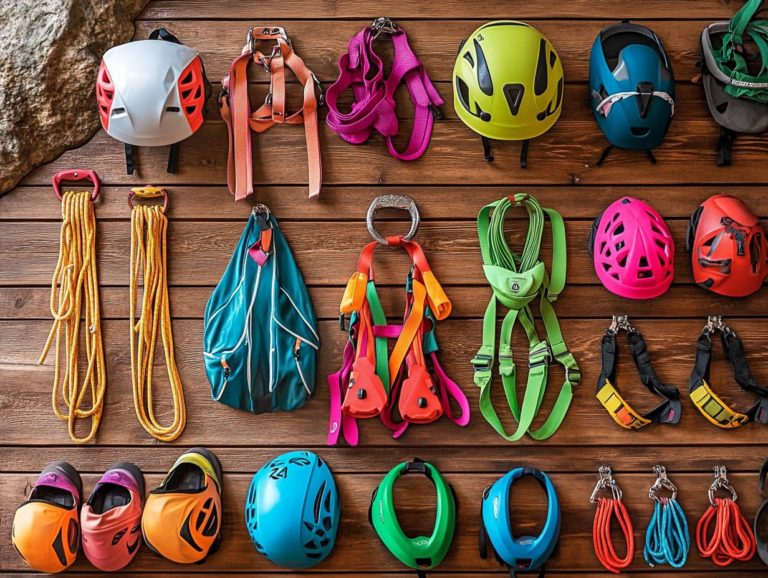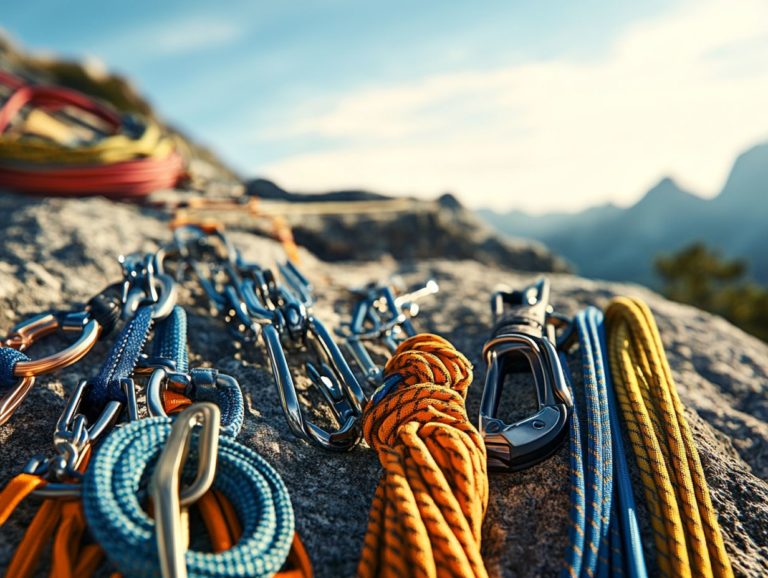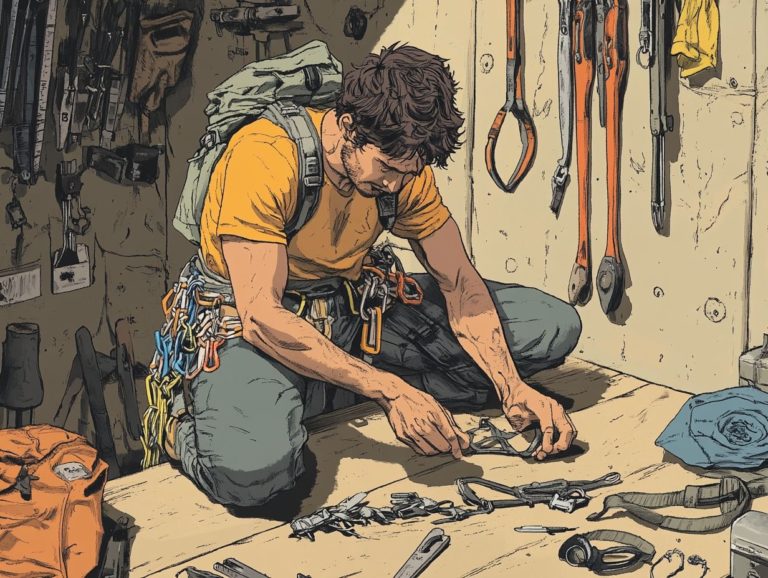How to Choose a Climbing Backpack
Choosing the right climbing backpack can truly elevate your outdoor experiences, whether you’re tackling crags for the day or setting off on an overnight expedition.
With a variety of types and features, picking the right pack can be overwhelming. This guide simplifies the process, covering everything you need to know from understanding the specific purpose of your backpack to exploring the various types and essential features available.
Dive in and discover how to align your climbing needs with the ideal backpack for your adventures.
Contents
- Key Takeaways:
- Understanding the Purpose of a Climbing Backpack
- Explore the Exciting Types of Climbing Backpacks!
- Features to Look for in a Climbing Backpack
- More Must-Know Tips for Your Climbing Backpack!
- Frequently Asked Questions
- What are the important features to consider when choosing a climbing backpack?
- What size backpack should I choose for climbing?
- What materials are best for a climbing backpack?
- Should I prioritize comfort or weight when choosing a climbing backpack?
- What type of closure system is best for a climbing backpack?
- Is it necessary to have extra pockets and compartments in a climbing backpack?
Key Takeaways:
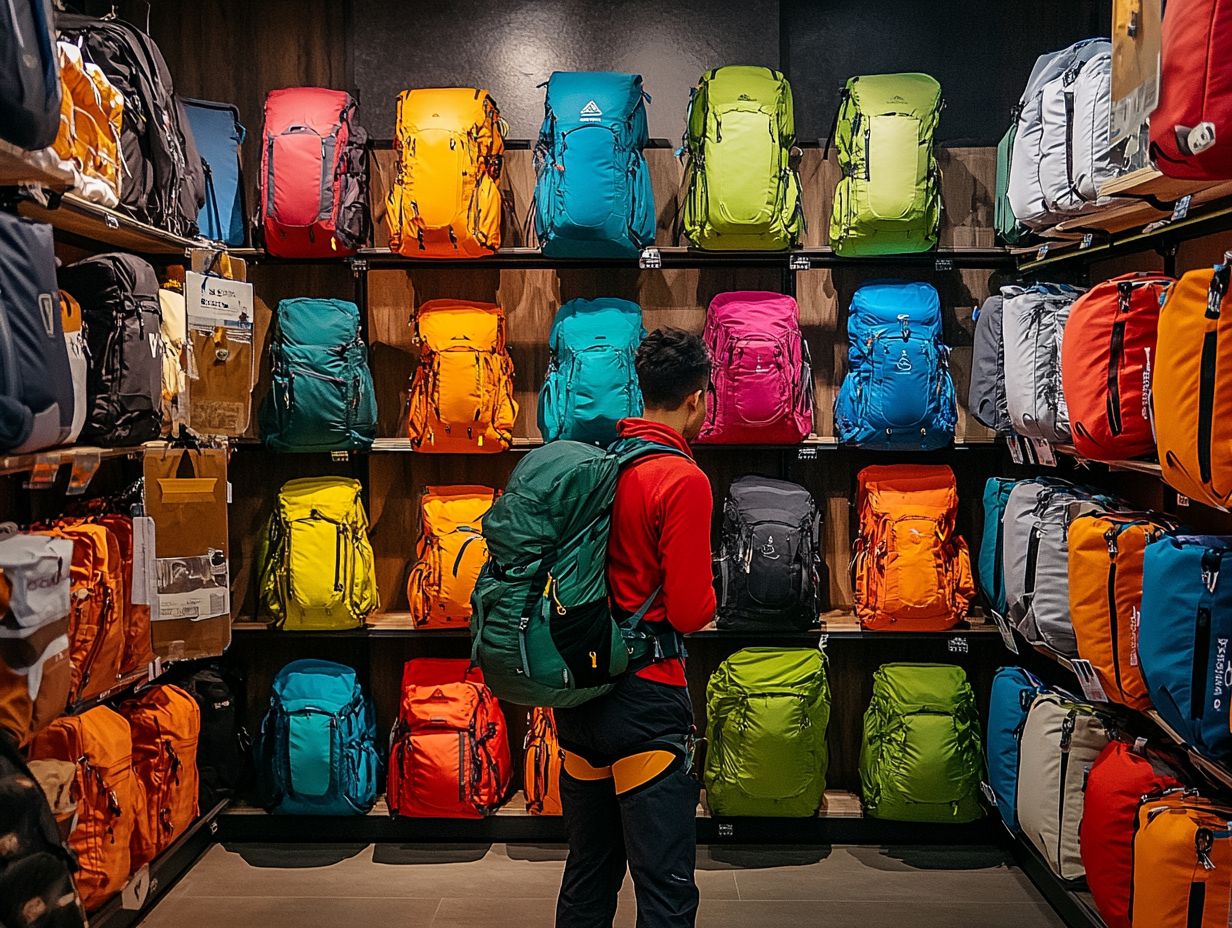
Understanding the Purpose of a Climbing Backpack
A climbing backpack plays a crucial role in elevating your rock climbing experience by efficiently storing and transporting your gear. Whether you’re setting out on a single-pitch ascent (climbing a single, short section) or a multi-pitch expedition (longer climbs with multiple sections), the right pack is vital.
These specialized packs are crafted from durable fabrics, designed to endure the demands of the outdoors. They come equipped with compartments tailored specifically for your climbing tools, helping you to access your gear quickly.
The right climbing pack enhances your comfort and convenience while optimizing your performance on the rock, making it an essential companion for every outdoor adventure you undertake.
What to Consider When Choosing a Backpack
When selecting a climbing backpack, it s essential to weigh factors like pack capacity, the balance between weight and durability, and your specific climbing goals.
The type of climbing you plan to pursue is also important whether it’s alpine climbing, multi-pitch routes, or bouldering because each discipline calls for distinct features in your pack.
Comfort and fit are vital as well. A well-fitted backpack distributes weight evenly, minimizing strain during long ascents. Assess the adjustability of the straps and the overall design to ensure it sits comfortably against your back and hips.
Aligning the pack’s capacity with your gear requirements and personal preferences can significantly elevate your climbing experience, allowing you to carry just the right amount of gear without unnecessary bulk.
Explore the Exciting Types of Climbing Backpacks!
Climbing backpacks come in a range of types, each carefully designed for specific activities. You’ll find daypacks, perfectly suited for brief outdoor excursions, alongside climbing daypacks that fit essential gear necessary for your ascent.
For those ambitious enough to tackle longer, more technical climbs in demanding environments, there are mountaineering backpacks designed to provide the support you need.
Daypacks vs. Overnight Packs
Daypacks and overnight packs each fulfill distinct roles in the climbing realm. Daypacks are your lightweight companions, expertly crafted for carrying essential climbing gear on shorter excursions. In contrast, overnight packs provide the extra capacity and support needed for multi-day mountain adventures.
Understanding these differences can profoundly influence your climbing experience, as each pack type is designed for specific activities. Daypacks typically range from 15 to 30 liters and feature streamlined designs that prioritize comfort and mobility, ideal for short hikes or cragging sessions.
Overnight packs generally boast capacities exceeding 40 liters, incorporating thoughtful additions like hydration reservoirs, gear loops, and specialized compartments for camping essentials like sleeping bags and stoves.
When venturing into alpine terrain or tackling longer routes, choosing the right pack is crucial. It ensures that you are well-prepared and organized for whatever challenges the wilderness may throw your way.
Features to Look for in a Climbing Backpack
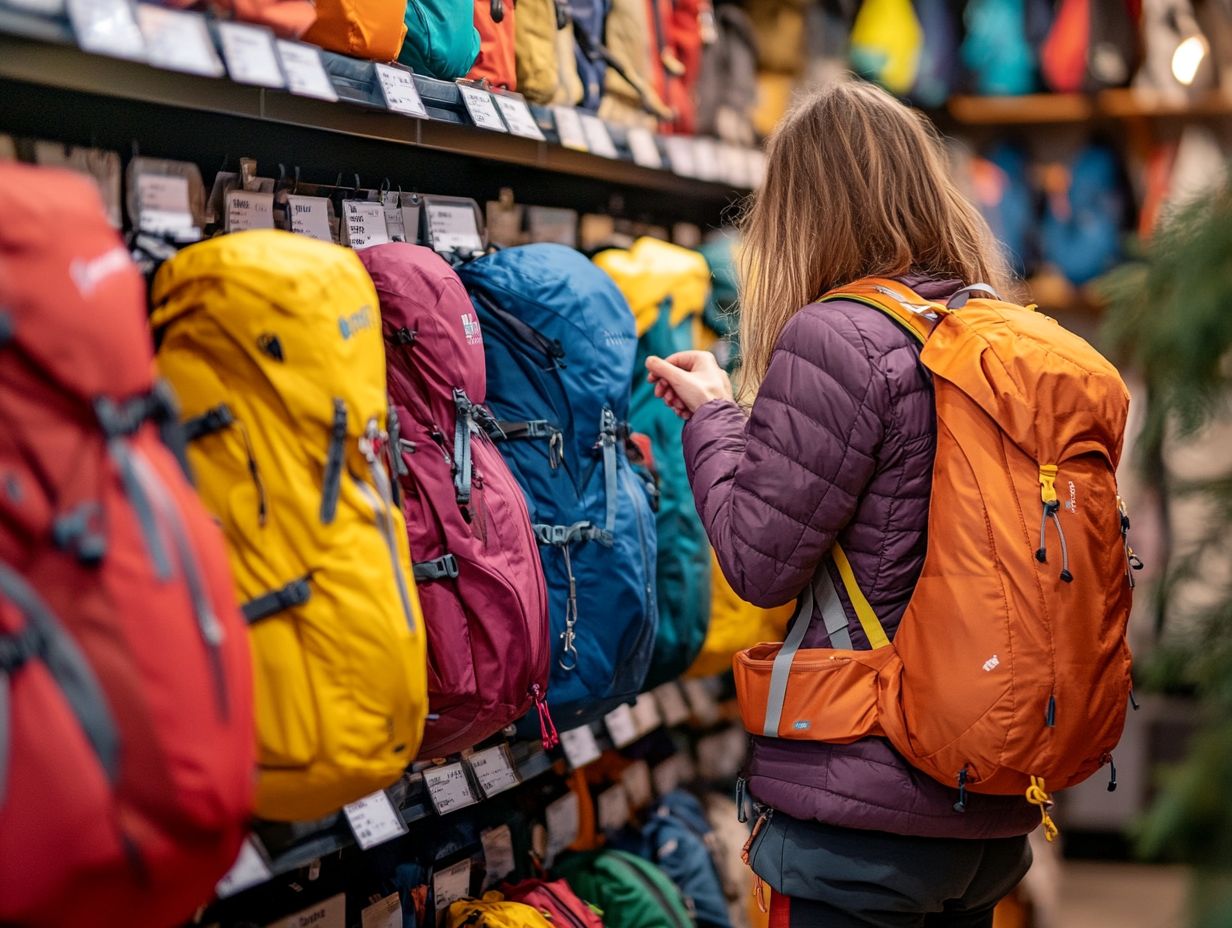
When you’re choosing a climbing backpack, focus on features like fabric durability, comfort, and fit.
These elements significantly enhance your climbing experience and ensure efficient gear hauling.
Your choice can make all the difference in how you perform and enjoy your adventure.
Capacity and Weight
Balancing pack capacity and weight with durability is crucial for optimizing your climbing gear setup.
Ensure there’s enough space for essential equipment while keeping your load manageable for the climb.
Assess how the volume of your pack impacts your performance and endurance on the ascent.
A larger pack can accommodate extra gear like ropes, harnesses, and clothing, but if it becomes too heavy, it could hinder your agility and lead to quicker fatigue.
On the flip side, a lightweight pack may streamline your movement, yet it might not hold all the necessary gear for extended treks or unpredictable weather.
Finding the right balance is key, allowing you to adapt to various environments without compromising safety or performance.
This makes it a vital consideration in your gear selection process.
Comfort and Fit
Comfort and fit are essential to your climbing experience.
An ill-fitting backpack can severely impede your mobility and energy levels while you’re hauling gear up those challenging ascents.
Focus on features like adjustable straps and ergonomic designs that enhance performance and reduce fatigue.
A well-crafted backpack should contour to your body for optimal weight distribution, enabling you to maneuver freely and efficiently.
This attention to detail translates into increased endurance, letting you enjoy longer, more rewarding climbs without the nagging distraction of discomfort.
Features like padded hip belts can also help stabilize the pack, contributing to your overall comfort and elevating your climbing experience.
Durability and Weather Resistance
The durability and weather resistance of your climbing pack are essential for keeping your gear safe throughout your outdoor adventures.
When traversing rugged terrain or facing sudden weather changes, your backpack must withstand harsh elements to protect your valuable equipment.
A well-constructed climbing pack is crucial for maintaining the integrity of your essential climbing gear, including ropes, harnesses, and protective clothing.
Choose materials built to last! They will ensure your gear stands up to the challenges of the great outdoors.
This not only enhances your confidence but ultimately elevates your entire climbing experience.
More Must-Know Tips for Your Climbing Backpack!
In your quest for the perfect climbing backpack, go beyond just capacity, comfort, and durability.
Weigh factors like price and budget, brand reputation, and any specialized features tailored to your specific climbing activities.
Each of these elements plays a pivotal role in ensuring you make a well-informed choice that meets your needs seamlessly.
Ready to choose your perfect climbing backpack? Start your adventure today!
Price and Budget
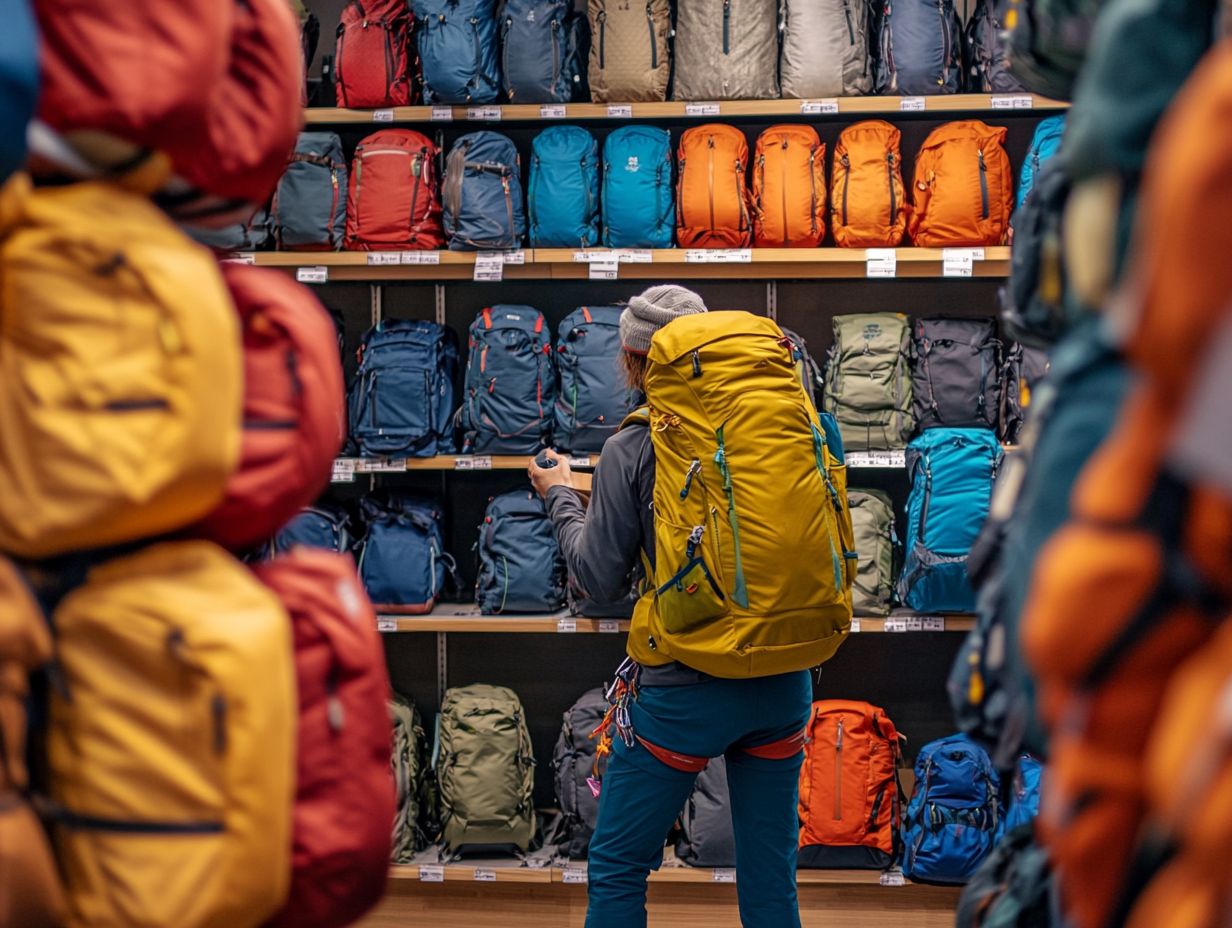
Establishing a clear price and budget for your climbing pack is crucial. This ensures you invest in a quality product that aligns perfectly with your climbing needs without splurging on unnecessary features.
Start by identifying what aspects matter most for your adventures think durability, weight, and storage capacity. Take the time to compare different models and prioritize essential features that can elevate your climbing experience, such as hydration systems or loops for attaching equipment. Additionally, consider learning how to pack a backpack for hiking to ensure you’re fully prepared for your journey.
While it may be tempting to chase the latest designs, remember that a well-constructed backpack with a simpler design can deliver greater value over time. Quality doesn’t always come with the highest price tag; by understanding the materials and craftsmanship involved, you can make a sound investment for your climbing journeys. Additionally, learning how to pack your climbing gear efficiently can enhance your overall experience.
Brand and Reputation
Choosing a climbing backpack from well-known brands is essential. Brands like Black Diamond and Arcteryx offer superior quality and customer support. This means your gear will be safe and reliable when you need it most.
These brands have earned their esteemed status in the climbing community by consistently innovating and testing thoroughly under demanding conditions. Their unwavering commitment to excellence not only enhances your safety but also builds trust among climbers, giving you the power to pursue your passions with confidence.
Having gear with a solid reputation can make a significant difference during challenging climbs, where reliability can be the determining factor between a successful ascent and a precarious situation. Therefore, investing in equipment from these respected brands can elevate your experiences and foster lasting relationships in the world of outdoor adventure.
Specialized Features for Specific Climbing Activities
Specialized features in climbing packs can significantly enhance your experience. They address the unique demands of various climbing activities, whether you’re gearing up with a mountaineering backpack for alpine adventures or grabbing a daypack for a brisk rock climbing session.
When selecting a climbing backpack, weigh factors like weight distribution, durability, and storage options. For guidance, check out How to Choose the Right Backpack for Hiking. Leading brands like Osprey and Black Diamond provide models equipped with reinforced gear loops, essential for swift access to your must-haves during climbs.
For instance, the Osprey Mutant 38 is celebrated for its adaptable design, making it a great fit for both rock and alpine climbing. To ensure you select the best option, consider how to choose the right climbing harness. Meanwhile, the Black Diamond Speed 40 shines with its lightweight construction and impressive versatility.
Incorporating features like hydration reservoirs and compression straps can enhance functionality, ensuring each pack is perfectly tailored to your specific needs and enriching your overall climbing experience.
Frequently Asked Questions
What are the important features to consider when choosing a climbing backpack?
When picking a climbing backpack, think about size, weight, durability, comfort, and how much you can store.
What size backpack should I choose for climbing?
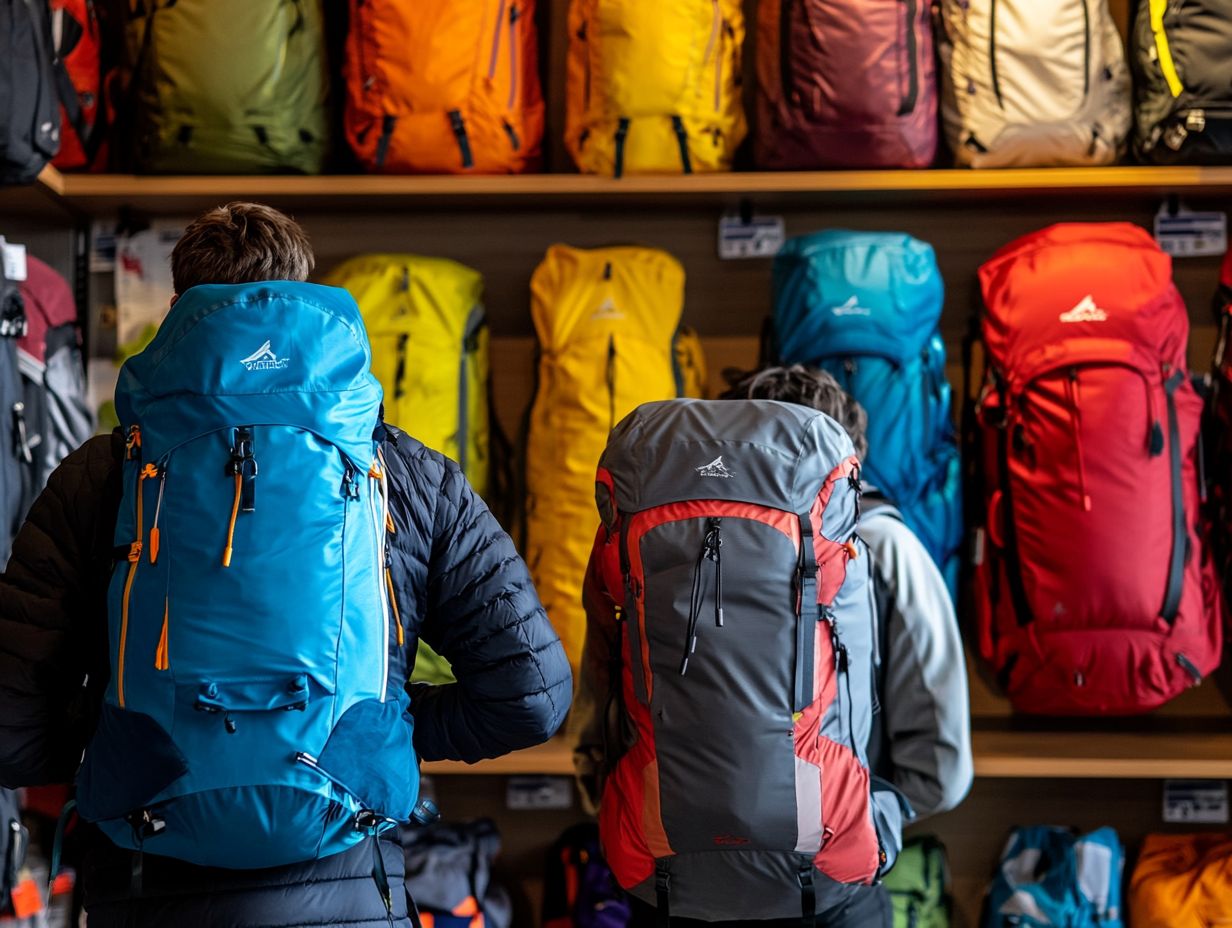
The size of your climbing backpack will depend on the length and difficulty of your climb. Typically, a 30-40 liter backpack is suitable for day trips, while multi-day trips may require a larger 50-70 liter backpack.
What materials are best for a climbing backpack?
Climbing backpacks should be made of durable and water-resistant materials such as nylon or ripstop fabric. Look for reinforced seams and high-quality zippers for added durability.
Should I prioritize comfort or weight when choosing a climbing backpack?
Both comfort and weight are important factors to consider. Look for a backpack that is lightweight but also has comfortable shoulder straps and a supportive waist belt to distribute weight evenly.
Ready to find your perfect climbing pack? Start exploring your options today!
What type of closure system is best for a climbing backpack?
A top-loading system is the most popular choice for climbing backpacks. It offers quick access to your gear while keeping everything secure during climbs.
Is it necessary to have extra pockets and compartments in a climbing backpack?
Extra pockets can help organize your gear effectively. However, they may also add some weight. Think about your climbing needs when deciding on the number and size of compartments.

